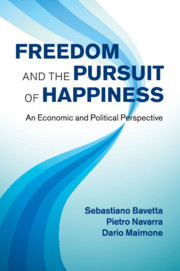Book contents
- Freedom and the Pursuit of HappinessAn Economic and Political Perspective
- Freedom and the Pursuit of Happiness
- Copyright page
- Contents
- Preface
- One Introduction
- Two IndividualWell-Being
- Three Autonomy Freedom and IndividualWell-Being
- Four Capability and Individual Well-Being
- Five EconomicFreedom, Political Freedom, and IndividualWell-Being
- Six Autonomy and NegativeFreedom
- Seven Autonomy and Capability
- Eight Autonomy,Limited Government, Capability, and Happiness
- Nine Normative Consequences of the Pursuit of Happiness
- References
- Index
- References
References
Published online by Cambridge University Press: 05 October 2014
- Freedom and the Pursuit of HappinessAn Economic and Political Perspective
- Freedom and the Pursuit of Happiness
- Copyright page
- Contents
- Preface
- One Introduction
- Two IndividualWell-Being
- Three Autonomy Freedom and IndividualWell-Being
- Four Capability and Individual Well-Being
- Five EconomicFreedom, Political Freedom, and IndividualWell-Being
- Six Autonomy and NegativeFreedom
- Seven Autonomy and Capability
- Eight Autonomy,Limited Government, Capability, and Happiness
- Nine Normative Consequences of the Pursuit of Happiness
- References
- Index
- References
Summary

- Type
- Chapter
- Information
- Freedom and the Pursuit of HappinessAn Economic and Political Perspective, pp. 209 - 224Publisher: Cambridge University PressPrint publication year: 2014

